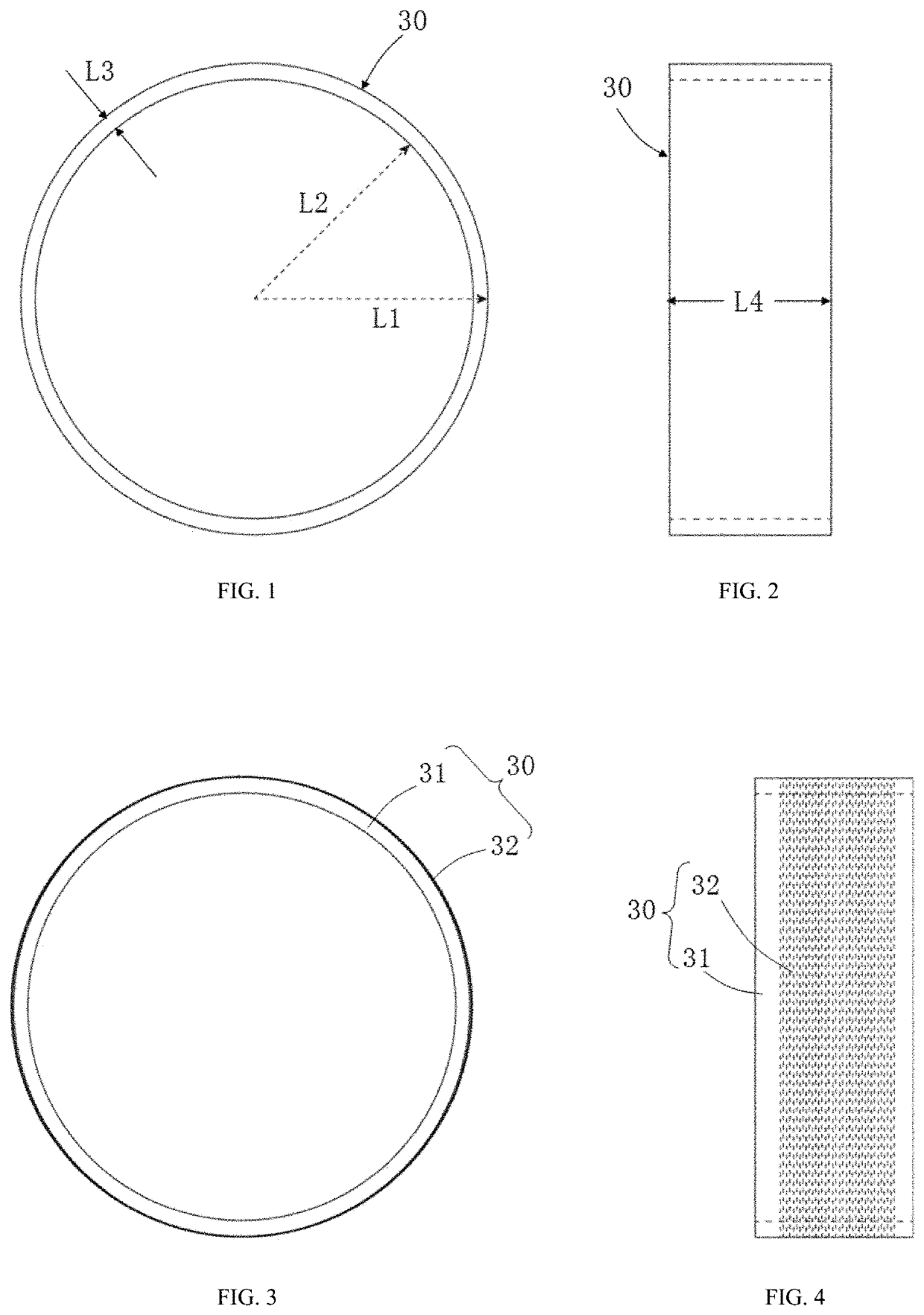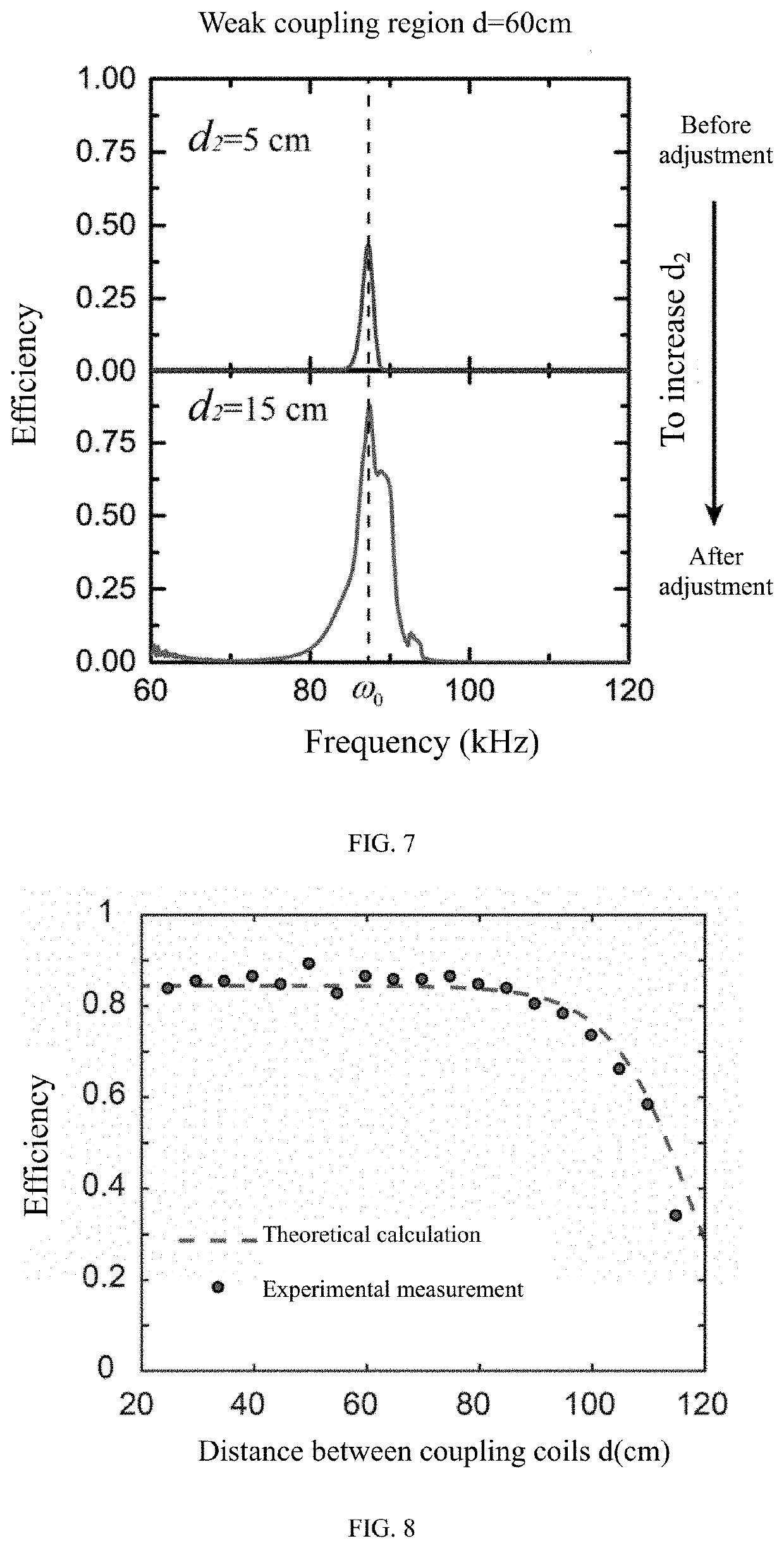Wireless Power Transfer Method and System Using the Same
a power transfer system and wireless technology, applied in the direction of transformers, electrical equipment, inductances, etc., can solve the problems of unsolved instability of the system, waste to the other eigenmode, and the likely serious damage to the complex components and systems of the system, so as to achieve efficient and stable power transfer, improve stability, and simple operation
- Summary
- Abstract
- Description
- Claims
- Application Information
AI Technical Summary
Benefits of technology
Problems solved by technology
Method used
Image
Examples
embodiment 1
[0049]In this embodiment, a wireless power transfer system comprising a dual resonance coil device is provided.
[0050]The wireless power transfer system can be used for wireless power transfer for high-power electric automobiles under a working frequency of 85 KHz and comprises a signal source 10, an exciting coil 20, a pair of coils having a resonance frequency of 85 kHz (a first resonance coil 30 and a second resonance coil 40), a receiving coil 50 and a load 60. Each resonance coil is formed by an organic glass plate (insulating dielectric plate), a litz wire (metal wire) closely wound on the organic glass plate by 22 turns and capacitors (lumped parameter elements) welded to the litz wire.
[0051]The resonance coil is prepared through the following steps:
[0052]The litz wire is closely wound on a side face of the organic glass plate by 22 turns, and then the capacitors are connected to the head end and the tail end of the litz wire.
[0053]The structure of the organic glass plate in t...
embodiment 2
[0056]In this embodiment, an operation method of the wireless power transfer system in embodiment 1 is provided.
[0057]FIG. 5 shows the high-power efficient wireless power transfer system applicable to a working frequency of 85 kHz. As shown in FIG. 5, after a signal at the eigenfrequency is made to enter the exciting coil via the signal source, the first resonance coil is excited. Afterwards, power is transmitted to the second resonance coil through near-field magnetic coupling. Finally, the power is coupled out via the receiving coil to be received by the load, wherein d1, d and d2 separately refer to the distance between the exciting coil and the first resonance coil, the distance between the resonance coils and the distance between the second resonance coil and the receiving coil.
[0058]FIG. 6 is an efficiency comparison diagram before and after the system in embodiment 1 is adjusted to a single-mode point in by regulating the coupling distance d into a strong coupling region, and...
PUM
 Login to View More
Login to View More Abstract
Description
Claims
Application Information
 Login to View More
Login to View More - R&D Engineer
- R&D Manager
- IP Professional
- Industry Leading Data Capabilities
- Powerful AI technology
- Patent DNA Extraction
Browse by: Latest US Patents, China's latest patents, Technical Efficacy Thesaurus, Application Domain, Technology Topic, Popular Technical Reports.
© 2024 PatSnap. All rights reserved.Legal|Privacy policy|Modern Slavery Act Transparency Statement|Sitemap|About US| Contact US: help@patsnap.com










